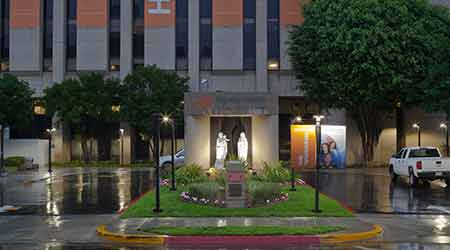 Dignity Health realized energy savings of $563,000 per year and maintenance savings of $505,000 from its exterior lighting project.Photo: Acuity Brands
Dignity Health realized energy savings of $563,000 per year and maintenance savings of $505,000 from its exterior lighting project.Photo: Acuity BrandsHealth Care System Saves More than $1 Million in Maintenance, Energy Costs
Part four of a four-part article on an exterior LED upgrade at California hospital
The St. Mary portion of the exterior lighting upgrade took four months to complete, and upgrades at all Dignity properties took 21 months to complete.
The project resulted in significant energy savings. St. Mary saved $36,404 in energy and $23,450 in maintenance per year after the upgrades. Dignity realized energy savings of $563,000 per year and maintenance savings of $505,000 a year for all of its properties combined.
The outdoor lighting upgrades at St. Mary continue. After completing the initial project, officials are planning a $124,446 project to install LEDs in the parking garage. They anticipate the project will provide energy savings of $32,172 yearly and maintenance savings of $8,130.
“We originally thought to stay with the super T8s that were installed two years ago and get the expected life out of them, but the aesthetics of the LEDs were so superior we decided to go ahead immediately,” Gerner says.
Next up for Dignity is to upgrade the interior system with the same goals as with the outdoor lighting projects — improving aesthetics and saving energy.
“We know that control lighting can dramatically affect patient outcomes and staff effectiveness, and we believe that embedded network sensors can provide tremendous leverage to future BAS systems,” Gerner says. “We’re about to move strongly into retro- and continuous commissioning of our buildings and systemwide upgrades to obsolete pneumatic building controls. We see a convergence of several technology trends that we hope will lead us to a much brighter future where the costs to operate our buildings is significantly reduced and our patient outcomes are measurably improved.”
Related Topics:















